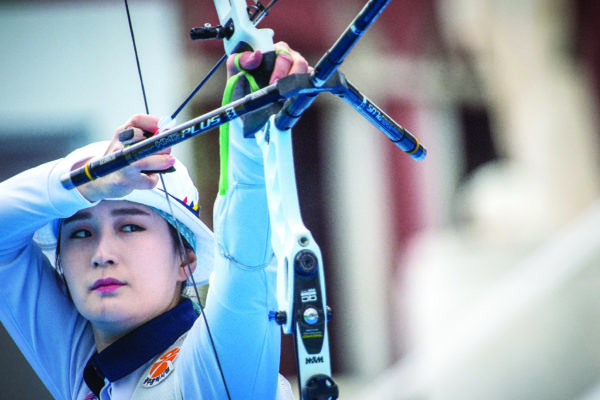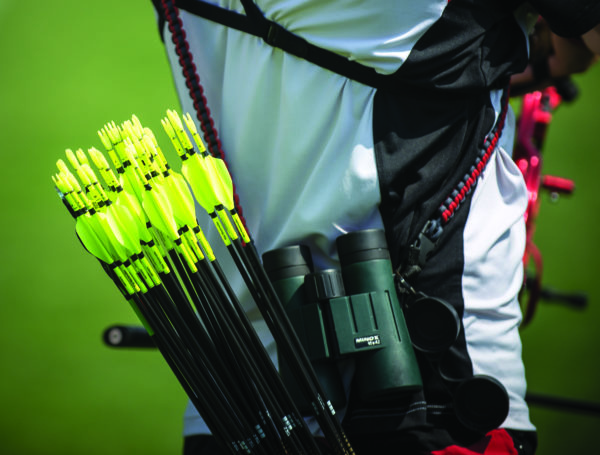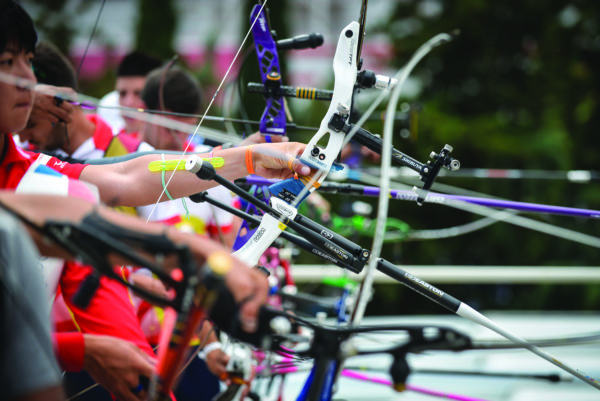I thought ILF risers and limbs were all supposed to fit together the same? My limbs don’t fit exactly in the riser pocket? How does this all work, exactly?
Andrew Smith says…
International Limb Fitting, more commonly known as ILF, is the method by which most limbs are attached to the riser and is the preferred method on over 95% of recurve tournament target bows manufactured today.
The big benefit of ILF is choice, because of the number of different manufacturers that make risers and limbs with this fitting. This provides a platform to allow archers to mix and match products for both performance and cost reasons. In particular, allowing new archers to buy the riser of their choice and initially match it with low cost limbs. It also means that manufacturers can offer archers a multitude of products with wildly different shooting characteristics.
However, the story is not all rosy and archers may find that when mixing different manufacturers products, the fit can vary. These issues can be minor, but nonetheless you should be aware of the possibility. This is because what is called ILF is not an industry standard, it is a limb pocket fitting that has grown organically over time and is subject to different interpretations from manufacturer to manufacturer.
The basis for ILF was a bow designed by Earl Hoyt, a proprietary system used very successfully on Hoyt Bows in the 80’s and 90’s and can still be found on their products today (marketed as “Grand Prix”).
Earl Hoyt’s design proved very popular with top archers, as it meant that archers could adjust the draw weight of the bow to get a better arrow spine match and improved arrow flight. In the early 90’s a manufacturer developed the first non-Hoyt riser that could be fitted with Hoyt limbs. A subsequent lack of defence of the copyright encouraged other manufacturers to develop risers and limbs using this limb fitting.
The real compatibility issues with ILF are simply down to the fact that Hoyt have never released the exact measurements of the limb pockets, geometry and fittings, so to put it politely, manufacturers had to back engineer the design. Some have done this in imperial measurements and the rest in metric, resulting in minor fit incompatibilities.
Additionally, whilst the original Earl Hoyt geometry leaves little scope for a radical redesign and has remained relatively unchanged, manufacturers including Hoyt have over time tweaked the design to improve arrow speed and bow efficiency, resulting in issues with backward compatibility.
However, manufacturer tinkering of the limb pocket angles and or how the limb sits in the pocket may result in the marked draw weight on the limb being rather higher or lower than is expected.
Whilst the beauty of ILF is that archers can mix and match limbs and risers, some of the more common compatibility issues that may require very small modifications to get a good solid fit are:
- Making sure the cutout at the end of the limbs fits correctly on the limb bolt.
- A reduction in the range of adjustment of the limb bolt.
At one extreme, the fit could be sloppy and allow the limb to move in the pocket from shot to shot creating a noisy, less accurate bow. Correctly set up ILF bows continue to be successful on the international stage, but before purchasing archers should seek advice on the consequences of mixing and matching, something a good archery dealer should be well-versed in dealing with.
If I wanted to change my arrow spine, would you advise choosing a spine that’s weaker or stiffer than recommended for my set-up?
Duncan Busby says…
An arrow’s spine is a reference to how much it will flex when under pressure; a weaker arrow will flex more than a stiffer one.
Arrows have two spine measurements; a static spine and a dynamic spine, these refer to the amount of flex in the arrow when force is exerted both manually and in flight.
An arrows static spine is usually calculated by suspending a weight from the centre of the shaft whilst the arrow is carefully supported at either end.
The amount of flex is measured in thousandths of an inch; manufacturers ratings are usually given as a number such as 550 or 400, this is the amount that arrow flexed when tested, for example a 400 spine arrow flexed by 0.4”, so the higher the number the weaker the arrow will be.
An arrow’s dynamic spine, which is the way it will react when shot, is a much more complicated affair as there are so many variables that come into play, such as arrow length, point weight and draw weight. In fact even your shooting style or release aid can have an effect on an arrow’s dynamic spine, so while you may have chosen arrows recommended for your set-up, you may still need to adjust their stiffness to find your ideal spine.
I’d always recommend starting with the manufacturers spine selection chart though, this is usually based on your bows draw weight and your arrow length, it can also take your bows speed and your point weight into account. Although it simplifies the process selection charts will give you an idea of which spine is most suitable for your set up and therefore which one to choose, at least initially.
There are several ways to tell if an arrow is too weak or stiff for your set up; paper tuning and bare shaft tuning are the usual go-to methods when fine tuning your arrows, but both these tests can be influenced by many other factors. Often the easiest way to diagnose arrow spine is to look at the grouping characteristics of your arrows.
An arrow which is too weak for your set up will behave very differently than one which is too stiff; weaker arrows have a tendency to group fairly well at longer distances but not so well at shorter ones. They will also react badly to poorly executed shots, you may make five good shots and get a nice group of arrows, but the one you shot badly will be much further out from the group than expected.
Stiff arrows however tend to group well over shorter distances but open out a little more at long range. On the plus side, they are a little more forgiving of bad shots and give you a more predictable if slightly open group.
When selecting arrows I would always advise going slightly stiffer rather than weaker, in the long run a stiffer arrow will be easier to tune and will often give more predictable results over time.
If you find yourself between spines on the chart, go for the stiffer one but cut the shaft a little longer than usual, the extra length will weaken the arrow’s dynamic spine making it a better match to your bow, and if you do need to go stiffer again you’ll have plenty of room to cut the arrow down.
How do I determine the best weight for stabilising the bow, and how do I determine if there is too much or too little?
Sjef van den Berg says…
I think if you have too much weight on your bow it’s very difficult to keep your bow shoulder down. A little too much could be fine, but it will still take a lot of force and a lot of muscle to keep it up, and it’ll mess with the smoothness of your shot. If you are feeling after the shot that there is some tension in your neck or you feel your shoulder coming inwards, you may want to reconsider the amount of weight on your bow.
Too little is a different matter; there are cases like the Korean women who have basically no weight on their bow, and of course they get the results. You could say that too little could be personal preference, but too much is definitely something physical. There are rules of thumb for balance, but every bow and archer is so different, that I don’t think there really is a science to it, it’s just a matter of trying and seeing what works best.
In terms of recommendations, it’s a good idea to ask the guy in the shop what he recommends, because he’s seen loads and loads of stabilisers going out. For somebody who is just getting started with stabilisation, I would not recommend a huge extender, maybe go with something ‘normal’, three or four inches maybe.
I would start off with something like thirty inches in the front (the long rod) and maybe 12 inches in the back (the side rods). After that it’s a matter of experimenting with some weights. For me, I’ve always liked more weight on the front than in the back, but keeping the weights even on all the rods is a good starting point.
Some people use top weights, such as the Doinker ‘A bombs’. I use one. I find the bow jumps less and rolls more, and it gives me a slightly more aggressive shot. It’s more of a mental, feel thing than anything else. Also, adding weight to the bow is good for aiming, but if it’s on the riser, rather than on the front, then it’s going to put less stress on your shoulder.
If you look at the professional field, there is a wide variety of lengths and weights. The Koreans tend to go for long extensions and shorter side rods, and then there is someone like Brady who has huge long side rods. And they both work. It’s something that’s very personal for everyone, and not something you can just apply some rules to.
Thanks to Ian Furniss for asking the question.
Our expert panel will answer your questions, so just send yours to [email protected]
For more great content like this, subscribe today at our secure online store: www.myfavouritemagazines.co.uk




